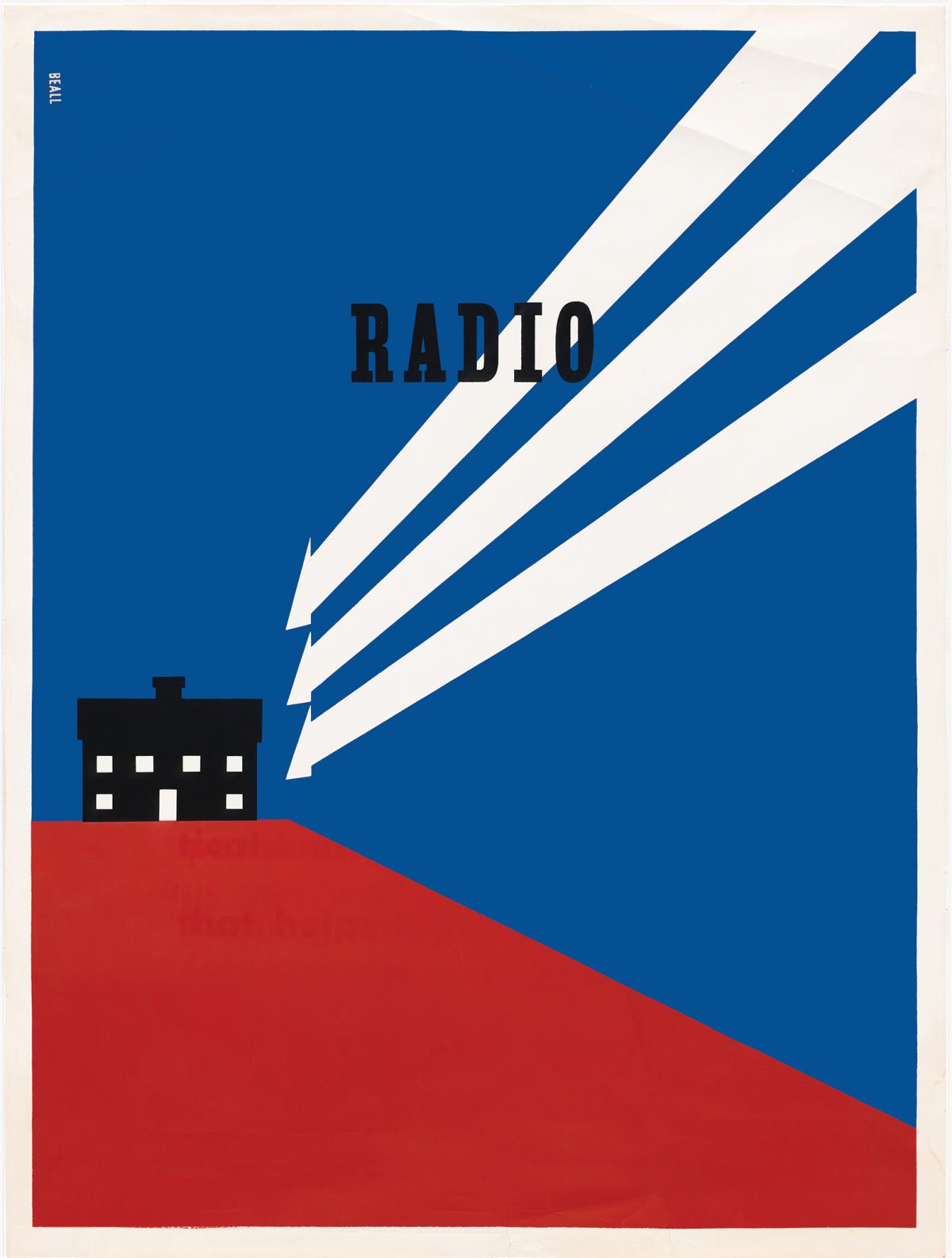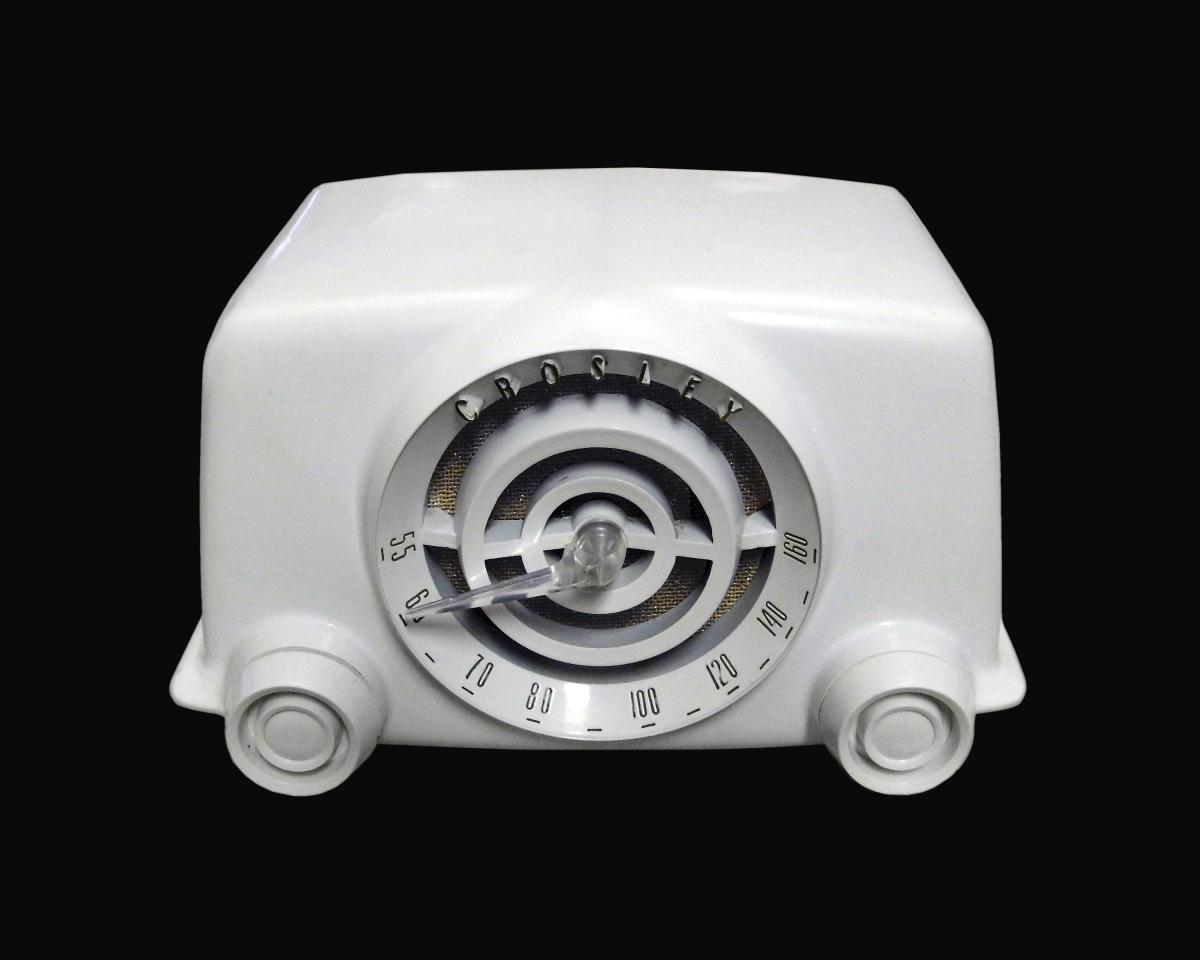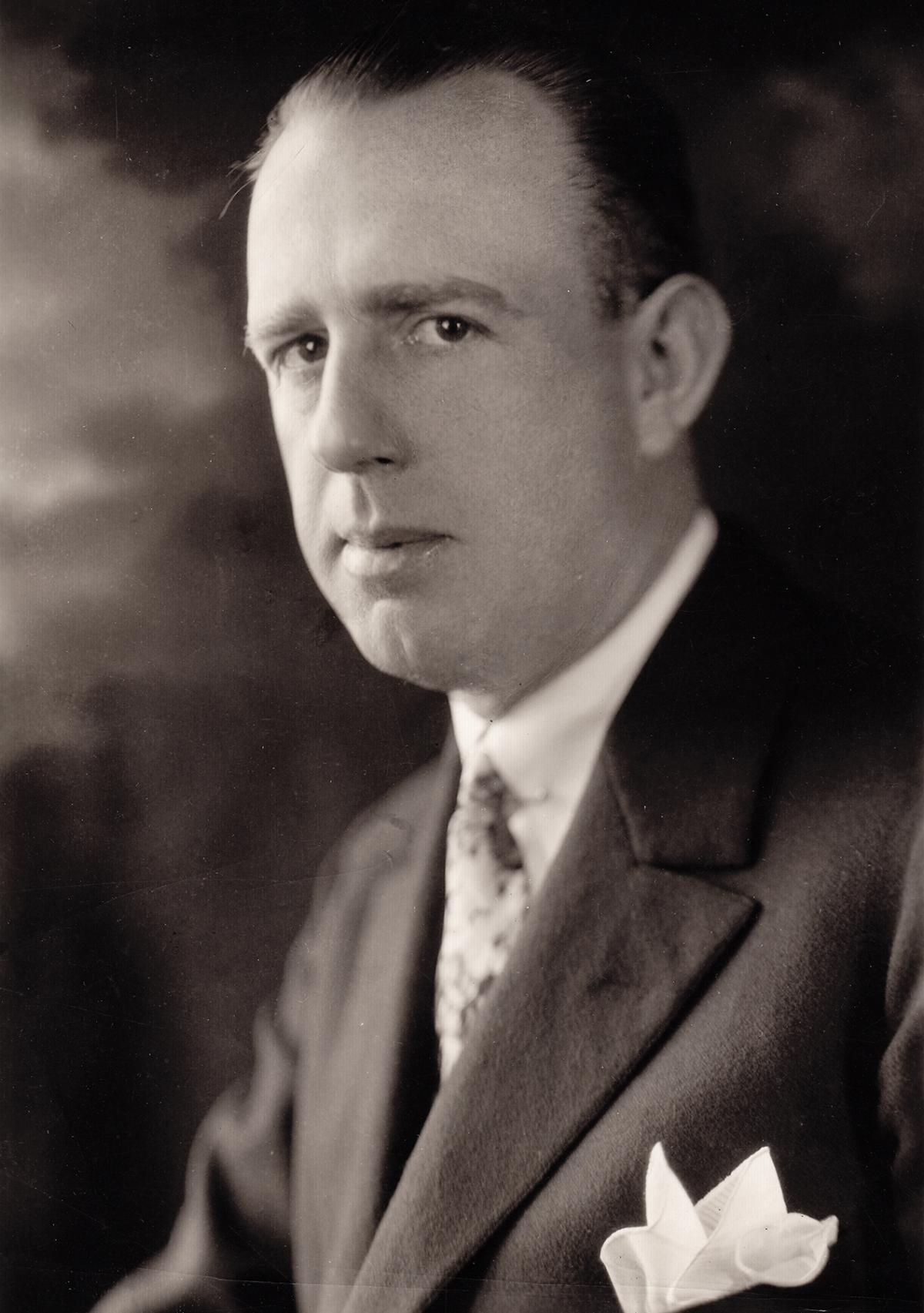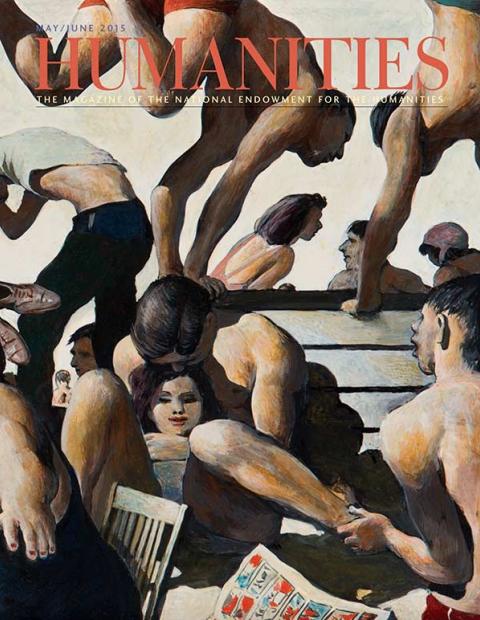When President Franklin Roosevelt, sitting in the White House, pushed a ceremonial button on his desk in May 1934, a five hundred thousand-watt (500 kW) behemoth stirred in a field outside Cincinnati. Rows of five-foot glass tubes warmed. Water flowed around them at more than six hundred gallons per minute. Dozens of engineers lit filaments and flipped switches, and, within the hour, enough power to supply a town of one hundred thousand coursed through an 831-foot tower.
Thus began WLW’s five-year, twenty-four-hour-a-day experiment: a radio station that used more power and transmitted more miles than any station in the United States had or would. The so-called super station—licensed by the new Federal Communications Commission (FCC) on a temporary basis—amped up the debate among broadcasters, government regulators, and listeners about how radio should be delivered to serve the “public interest,” a mandate laid out in the Radio Act of 1927, and influenced legal, programming, and technical decisions that shape the broadcast system we know today.
Since radio’s beginnings in the early 1920s, industry and government leaders promoted it as the great homogenizer, a cultural uplift project that could, among other things, help modernize and acculturate rural areas. The challenge was how to reach these areas, many of which received few or no radio signals in the mid-1930s. One solution was high-powered, clear-channel stations that could blanket large swaths of the country with a strong signal. These stations operated on “cleared” frequencies that the government assigned to only one station to prevent interference.
WLW had operated on one of forty designated clear channels since 1928. The station’s creator and owner, an entrepreneur, inventor, and manufacturer named Powel Crosley Jr. frequently increased the station’s wattage as technology and regulation allowed. In 1934, when WLW increased its power from 50 kW to 500 kW, all other clear-channel stations were operating at 50 kW or less. Now, WLW had the ability to reach most of the country, especially at night, when AM radio waves interact differently with the earth’s ionosphere and become “skywaves.” People living near the transmitter site often got better reception than they wanted; some lights would not turn off until WLW engineers helped rewire houses. Gutters rattled loose from buildings. A neon hotel sign near the transmitter never went dark. Farmers reported hearing WLW through their barbed-wire fences.
In the early days of broadcast development and regulation, Crosley and WLW sparked debate about what radio should and could be. Could a few clear-channel stations adequately serve—and acculturate—entire regions of listeners? Or would a national network system with local affiliates better target listener needs and interests?
Of course, for most broadcasters and regulators debating these broad delivery systems, “listeners” meant Americans who were white and middle or working class. Programming reinforced presumed middle class values. While some local stations offered programming targeted to ethnic groups, occupations, and even political beliefs, black Americans and other minority groups were largely left out of national radio, except as caricatures—usually played by white people—in comedy programs.
WLW began in 1921 on a wooden bread board. “One day my son visited a friend, and came home with glowing descriptions of a new ‘wireless’ outfit,” Crosley told a magazine in 1948. He agreed to buy his nine-year-old a radio, but when he discovered that sets ran upward of $100, Crosley said he decided to buy instructions and build his own. Amateurs at the time used bread boards as a platform for wires, tubes, and other components of low-cost crystal radio sets. The more expensive, preassembled radios used vacuum tubes and required battery power and had better reception. With plenty of money in the bank from his manufacturing business, Crosley—a curious, driven man whose employees alternately described him as aloof and “one of the boys”—could have afforded the $100 radio. Instead, he took the chance to learn about the new radio technology, firsthand. As always, he was thinking about how he could make it better.
Disappointed with the few, poor-quality program offerings his radio set pulled in, Crosley ordered a twenty-watt transmitter and started an amateur station in the living room of his Cincinnati mansion. “Before I knew it,” he later recalled, “I had virtually forgotten my regular business in my intense interest in radio.” He had made several failed attempts to produce a new automobile, but his regular business at the time—a mail-order auto accessories business, for which he designed gadgets—grossed more than $1 million annually. Crosley’s company also made furniture, including phonograph cabinets. “He knew manufacturing, and he saw radio as the new hot thing,” says Chuck Howell, head of the University of Maryland’s Special Collections in Mass Media and Culture, which houses recordings, photos, documents, and objects related to WLW.
Crosley’s instincts were right—in 1922, there were 60,000 radio sets in use in the United States; one year later, there were 1.5 million. By 1935, two thirds of all homes in the country had one.
Crosley played a big role in this surge. He was the first person to figure out how raw radio components could look better than a nest of wires, Howell says. His manufacturing facilities included a wood-working plant, so he hired a couple of University of Cincinnati engineering students and incorporated mass production techniques à la Henry Ford to pump out a $20 crystal radio set called the Harko—a small wooden box with dials on the front, affordable for the masses. A little more than a year after he wired his first breadboard, Crosley Manufacturing Corporation—soon to be renamed Crosley Radio Corporation—was the world’s largest maker of radio sets and parts. The company made little money at first, but by 1928 Crosley’s profit was more than $3.6 million.
But radios needed programming. More importantly, Crosley’s cheaper, less sensitive radios needed programming with a strong signal. The Department of Commerce, which regulated radio at the time, awarded him a license in 1922 to operate a commercial radio station with the call letters WLW that was based at his Cincinnati manufacturing plant. This allowed Crosley to increase the station’s power from 20 to 50 watts. In 1923, the government cleared Crosley to broadcast at 500 watts. That’s meager by today’s standards, but it was ten times the power most stations were using at the time.
From there it was full speed ahead for the ambitious industrialist, who kept out of the public eye, but was known to do business deals at family weddings. He sought more and more wattage for WLW, so that market reports, weather, recorded music, and variety shows would reach more people. He moved the transmitter to a remote location—the first time a station and transmitter had not occupied the same space. When the new Federal Radio Commission reorganized the crowded broadcasting spectrum in 1927, WLW was assigned the “cleared” 700 kHz frequency. The next year, the FRC green-lighted WLW to broadcast at 50 kilowatts from Mason, Ohio, about twenty-five miles north of Cincinnati. As one of the first stations to regularly broadcast at this level of power—the same maximum allowed for AM stations today—WLW began calling itself “The Nation’s Station.”
When Crosley applied for a license to experiment with 500 kW in 1932, regulators and the broadcasting industry thought WLW might pave the way for a series of clear-channel mega-stations that could provide better service to more people. Crosley hired RCA, GE, and Westinghouse to build a first-of-its-kind, $500,000 transmitter system that filled several buildings and included a 3,600-square-foot outdoor cooling pond. WLW was initially allowed to test high power between 1 a.m. and 6 a.m., and, in May 1934, the station began broadcasting with 500 kW around the clock.
From the 1930s to the 1950s, the nation’s clear channels dominated the radio world. All were owned by or affiliated with the rapidly expanding national networks. Because they brought in the most advertising revenue, clear-channel stations could produce higher-quality and more original content. The most popular programs and radio stars came from clear-channel stations.
During its super-powerful period, WLW carried programs from the NBC Red and NBC Blue networks, as well as a few from CBS. The station also helped start the Mutual Broadcasting System, through which clear-channel stations shared popular programming—such as WXYZ Detroit’s The Lone Ranger and WGN Chicago’s Lum and Abner—with cooperating stations across the country. In 1935, the Mutual Broadcasting System carried the first nighttime major-league baseball game, with WLW rising star Red Barber announcing. In 1937, after leaving the Mutual Broadcasting System, WLW started its own experimental network called the WLW Line, which gave WLW a direct line to advertising’s epicenter through WHN in New York.
WLW helped launch the careers of many radio stars, including Ma Perkins, Andy Williams, Rosemary and Betty Clooney, Red Skelton, and Fats Waller. The station was known for its hillbilly (later known as country) music and “barn dance” programs such as Midwestern Hayride. In the late 1930s, perhaps to emphasize its reach to rural listeners to the FCC, WLW added more agricultural programming and even started an on-site, station-owned farm. Crosley made it easy for owners of his radios to find this programming—his sets had “WLW” marked on the dial.
Other clear channel stations assumed they would soon get the go-ahead for higher power, and they fought to keep their frequencies from being duplicated elsewhere in the country. In the end, however, WLW’s power—both economic and sonic—would be the downfall of the super-powered experiment.
Stations far from Cincinnati but close to WLW on the frequency dial started complaining that WLW was interfering with their signals. (Although WLW had its own cleared frequency, its signal could still cause problems for closely adjacent channels of stations located hundreds of miles away. At the time of their frequency assignments, these stations would not have been powerful enough to broadcast across the same region.) WLW had to build a directional antenna system to reduce its signal strength toward a Toronto, Canada, station. WOR in Newark, New Jersey, which operated at 710 kHz, worried this would intensify WLW’s signal on the East Coast.
WLW continued to operate at 500 kW on temporary authority, renewable every six months, and, in 1936, the Federal Communications Commission began hearings on whether to allow stations to permanently operate at that wattage. In preparation for the hearings, the FCC conducted a survey of rural residents, the population for whom clear channels were thought to be the most beneficial. Respondents in thirteen states rated WLW as their top preferred station.
After the first round of FCC hearings, fifteen more stations applied to use 500 kW. Some had already started building facilities and new transmitters. However, regulators and non-clear-channel broadcasters were beginning to think this was too much power. In 1938, the Senate passed a resolution recommending that the FCC cap station power at 50 kW and voiced concern that superpower stations could deprive smaller stations of network affiliations and national ad revenue. Local and regional stations, who produced more locally focused programs, complained that WLW was encroaching on their ability to sell on-air spots, which was essential to their survival. The head of a group representing local stations without network affiliation told the FCC that “the local station has been in the position of Lazarus, dependent upon the crumbs from the table of Dives.”
Concern that clear channels and networks would monopolize the airwaves continued to mount. Roosevelt, who at the dedication of WLW’s superpower experiment said he was certain WLW would provide “a service managed and conducted for the greater good of all,” was having second thoughts. “The debate over clear channels was the first significant intra-industry dispute in AM radio,” writes media historian James C. Foust in the book Big Voices of the Air: The Battle over Clear Channel Radio. “Until at least the mid-1940s it was arguably the most important regulatory matter before the FRC and FCC, its inherent importance amplified by the intricate relationship it had to many of the radio industry’s other regulatory debates.”
Several years into the FCC hearings, New Jersey’s WOR sued WLW for allegedly interfering with its broadcasts. To prove that WLW was not interfering with other stations’ ability to operate, Crosley sent a team of engineers to the eastern seaboard to measure signal strength and record broadcasts. In a 2006 interview with a University of Maryland archivist, former WLW engineer Bill Alberts recalled the two trips, which took him from Cincinnati to Maine and south to Florida. “What we’d do was drive fifty to a hundred miles along the route, stop, and stay for one or two or three nights—the measurements were made at night . . . because that was skywave time,” he said.
“That was the time that WOR was claiming interference.” The engineers traveled in a car with an antenna attached to the roof and a WLW decal on the side. Alberts says that over two years, they concluded that WOR’s claims were baseless, and, in some cases, WOR was actually interfering with WLW.
In the end, it didn’t matter. In 1939, despite WLW’s extensive testimony before the FCC and its insistence that cutting its power would cut service to people who otherwise had none, regulators decided not to renew WLW’s authority to broadcast at 500 kW. The station had to roll its power back to 50 kW, which is still the maximum wattage allowed today for AM clear-channel stations. The Crosley Corporation eventually appealed to the Supreme Court but was denied.
WLW continued its programming schedule, but with its power downgraded to ordinary levels, Crosley lost interest. His radios no longer dominated the market, and he’d been manufacturing new inventions, such as the Shelvador, the first refrigerator with shelves inside. His catalog of products would come to include Koolrest, a bed cooler and air conditioner; Go-Bi-Bi, a baby car-tricycle hybrid; and X-er-vac, a scalp massager that claimed to stimulate hair growth. But his true love was always cars, and after World War II—flush with capital from making products for the war effort—Crosley sold WLW and the Crosley Corporation to focus on Crosley Motors. He created a midget, European-sized car with an innovative lightweight engine made of sheet metal. Priced under $900, “The Crosley” got fifty miles per gallon and was no frills— initially, it had no upholstery. But Crosley sold only about fifty-thousand vehicles, and his plant shut down in 1952.
Crosley sold his failing auto company and retired from manufacturing, traveling between his various homes and with his Cincinnati Reds. He died of a heart attack in 1961 at the age of seventy-four. WLW continues to broadcast at 50 kW on the AM band. The station’s once groundbreaking transmitter is long retired but preserved, on-site, beside its modern counterpart. WLW still reaches the airwaves via the giant antenna Crosley installed in the 1930s.





